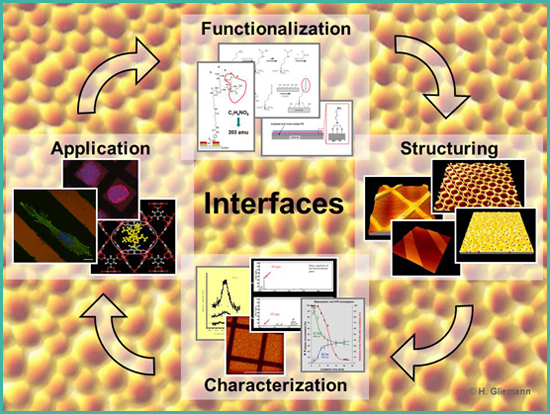Surface Functionalization and structuring
Structured and chemically functionalized Interfaces are of growing interest for many technical or medical applications. Therefore, the development of innovative chemical methods for the optimization of surface properties, which afford e.g. the specific coupling or adsorption of special molecules or molecular groups on the surface, is a big challenge of today’s research.
These chemical methods can be combined with methods of surface structuring, to create surface properties, which can neither be achieved solely by chemical functionalization nor solely by structuring of the surface. The activities of the work group Structuring and Functionalization of Interfaces at IFG focus on the development of a “tool box”, which affords the combination of innovative methods of chemical surface modification with those of structuring techniques down to the nanometer scale to tailor surfaces for the respective application.
Thereby we focus on both (1) substrate based large-area surfaces of metallic, oxidic and organic materials as well as (2) particulate systems. The structured and functionalized samples are applied e.g. in the field of biology for cell adhesion experiments or for substrate supported bottom-up assembly of viral nanoparticles. All activities are supported by a wide spectrum of different surface characterization techniques.

